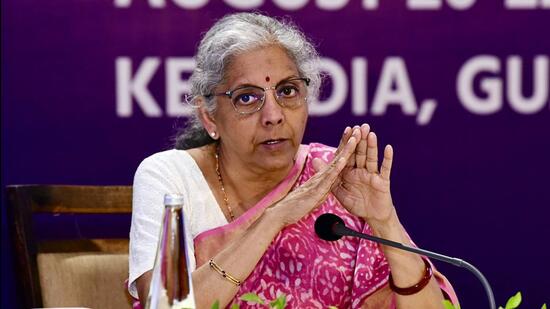Global uncertainty and domestic disruptions may keep inflationary pressures elevated in coming months, the finance ministry said on Tuesday, adding that this warrants greater vigilance by government and the Reserve Bank of India.
India’s retail inflation, as measured by the Consumer Price Index, jumped to a 15-month high to 7.44% in July from 4.87% the preceding month, with food inflation at its highest in 39 months because prices of vegetables, cereals and pulses spiked.
“Monsoon rains in August have been deficient at the time of writing,” the ministry said in its latest monthly economic review, hinting at persistent supply-side uncertainties. Adverse geopolitical developments could put pressure on food prices globally, it said.
Fresh supplies of farm produce and the government’s timely measures would soften food inflation, the July review, released Tuesday, added. “The government has already taken pre-emptive measures to restrain food inflation which, along with the arrival of fresh stock, is likely to subside price pressure in the market soon.”
Elevated inflationary pressures may pose a challenge to macroeconomic stability as food inflation has shown an uptick globally in July after a continuous decline since April 2022 (except in April 2023), the review cautioned.
The impact of global disruptions was clearly evident in India’s inflation numbers, the report said. “Headline inflation spiked to 7.4% in July 2023, with specific food commodities mainly driving the increase, while core inflation stayed at a 39-month low of 4.9%,” it said. Cereals, pulses and vegetables saw double-digit price growth in July compared to the corresponding period last year, it added.
Retail inflation also soared because of local factors, the review said. Disruption in domestic production aggravated inflationary pressures, it added. Interruption in the supply chain of tomatoes due to the white fly disease in Kolar district in Karnataka and the swift arrival of monsoon in northern India caused a surge in tomato prices. Prices of tur dal (pigeon pea) rose due to deficient production in this years summer season.
“Though food inflation in July is perhaps the third highest since the new CPI series began in 2014, only 48% of food items have inflation of above 6%, and this includes 14 food items with inflation in double digits,” the review said. “Items like tomato, green chilli, ginger and garlic witnessed inflation of more than 50%. Hence, the abnormal increase in prices of certain specific items led to high food inflation in July 2023.”
Domestic food prices will likely soften in coming months due to “steady performance” of the agriculture sector, along with fresh arrivals in the market, the review said. “The procurement of wheat and rice has been progressing well, increasing the buffer stock levels of food grains. Hence, ensuring sufficient food availability in the country. Reservoir levels above average decadal levels, adequate availability of fertiliser and seeds, and growing tractor sales augur well for the ongoing sowing activity,” it said.
That could be difficult. Cereal inflation has been stubbornly high for a year on account of both local and global factors and the situation may not change anytime soon.
Still, as on August 15, wheat procurement has passed the previous year’s level by 39% during the Rabi marketing season of 2023-24. At the same time, rice procurement of the Kharif marketing season of 2022-23 stood at 570.5 lakh tonnes and is expected to breach the previous year’s level with another month of procurement remaining.
Increased minimum support prices, the price at which the government buys farm produce, and prospects of a healthy autumn harvest would add strength to rural demand, the ministry review said. Domestic consumption and investment demand are expected to continue driving growth, it said.
Pointing at the adverse impact of global headwinds on India’s merchandise exports, it said the external sector requires monitoring for further strengthening the prospects in the face of active pursuit of industrial policies globally.
“Services exports continue to do well and are likely to continue doing so as the preference for remote working remains unabated, typically manifested in the proliferation of Global Capability Centres,” it added. “At the same time, from a medium-term perspective, it is important to monitor the impact of new technologies, such as Artificial Intelligence, on the external demand for Indian services exports and the consequent impact on employment.”
India seems well poised for growth in longer term, however coming months will be a real test for the economy and markets, Amnish Aggarwal, head of research at Prabhudas Lilladher Pvt Ltd said citing two key reasons: EL Nino impact on crops and Inflation, and dim possibility of further cut in interest rates. “We expect markets to start factoring in political risks as election related activity picks -up with state elections in November and Lok Sabha elections in April 2024,” he said in India Strategy report.
